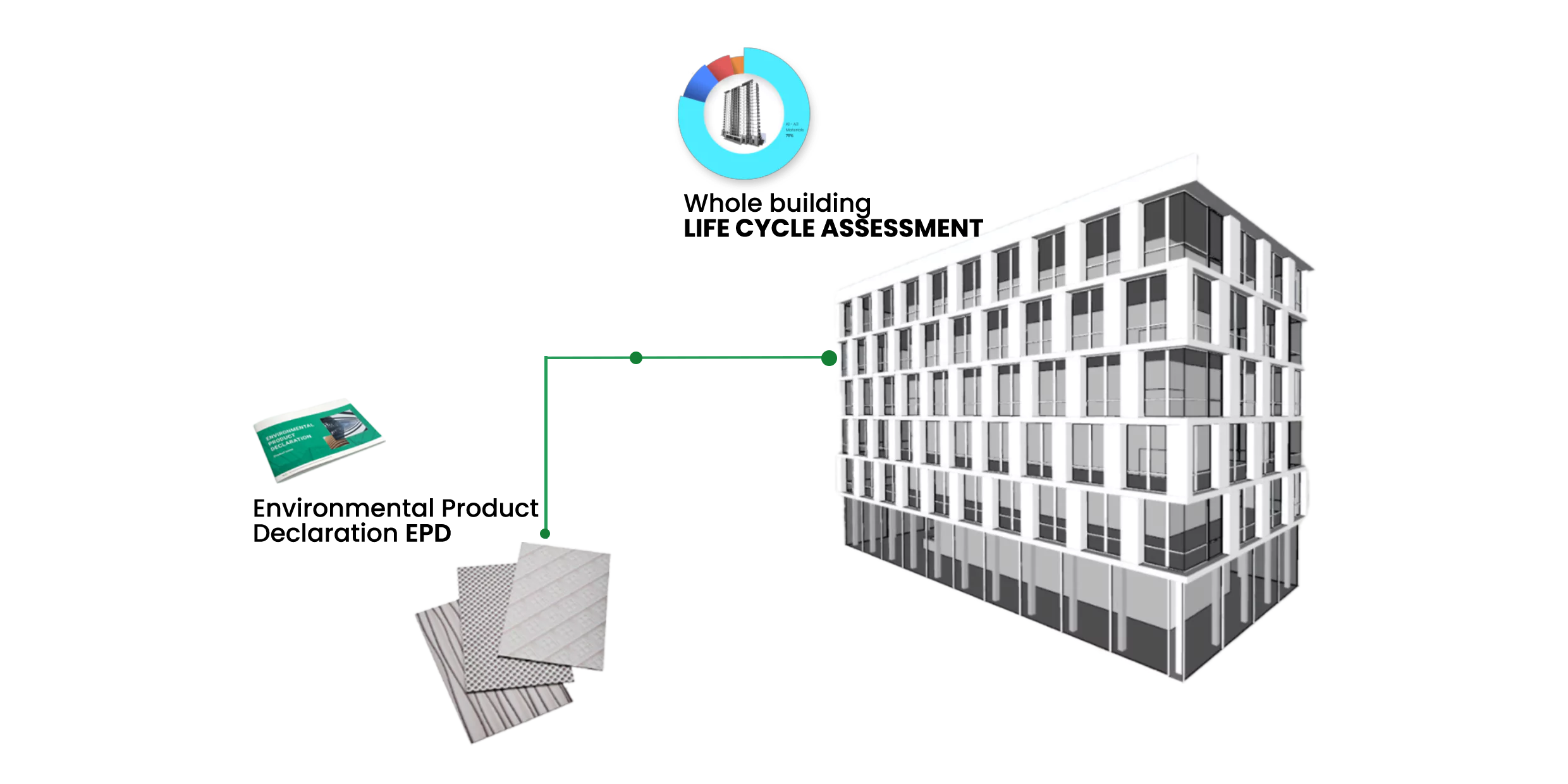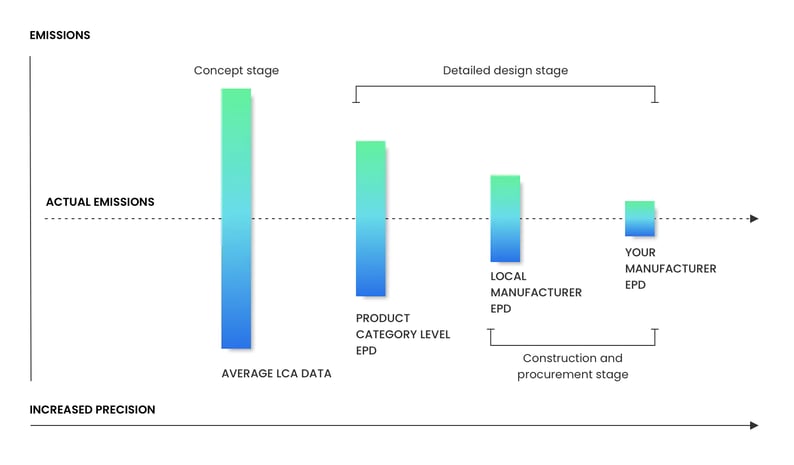
Source: One Click LCA
The role of Environmental Product Declarations in Whole Building Life Cycle Assessment
To correctly assess the environmental impacts of a building, it is necessary to calculate the environmental impacts of all the products used to construct it. This is why reliable materials data, particularly in the form of Environmental Product Declarations (EPDs), is so critical to ensuring the quality of Building Life Cycle Assessment (LCA) results.
A Building LCA quantifies the lifetime environmental impacts of the actions and processes needed to construct a building and make it functional. While an EPD quantifies the lifetime environmental impacts of a single product.
The main goal of performing the LCA of your building is to improve the design and reduce the environmental impacts of the project. One of the easiest ways to achieve this aim is to select materials that perform better in terms of carbon and other impacts through the whole life cycle. This includes, for example, whether materials have recycled content (and therefore lower embodied carbon) or need to be replaced less often than other materials during the use phase of the building.
In order to identify the best alternatives, it is important to have access to a comprehensive and robust database including data you can use with confidence. This is especially important when the Life Cycle Assessment is performed in the design stage, to improve the design before construction starts. By having access to different data sets and being able to compare the performance of different materials, you will be able to select the best alternatives for your design and reduce the environmental impacts overall.

Building materials data: why it matters
When selecting building materials for LCA calculations, the principle to apply is to always choose the highest quality option available.
This means that, in order of preference, the selection should go like this:
- Product EPD from the manufacturer of the specific product you are planning to use, if available.
- Technically similar product EPDs from a local manufacturer, if you don’t know yet which manufacturer to use.
- Product category level EPD.
- Average LCA data for the product in question.
EPDs are governed by international and European standards (in particular, ISOs 14025 and 14044 and EN 15804). Such standards support consistency, transparency and accuracy, making EPDs is a reliable way to assess the environmental impacts of building materials. EPDs make it possible to choose the highest-performing materials to reduce the overall embodied carbon of the building, and comply with regulations or achieve green building certification credits.
If local EPDs are not available, it is possible to use materials for the calculations with the same technical features as the materials you are planning to use, which means that the environmental impacts they would produce are roughly the same, and, therefore, can be used to calculate Whole Building LCA. It is also possible to use average LCA data.
EPD database vs. generic database: what’s the difference and how to use both
An EPD database is a database that contains comprehensive construction EPDs from one or more countries. These EPDs reflect the LCA analysis of specific materials produced by available manufacturers.
A generic LCA database is a database of industry average LCAs for selected material groups. An industry average LCA reflects the environmental performance of a material, calculated as an average across all manufacturers of that material. For example, if you are looking for the environmental emissions of paints in Germany, you will find the generic average LCA for all German paints. In this case, the average value consists of both the materials that have exceptional environmental performance and those that contribute highly to CO2 emissions. This might mean that, even if you choose a better performing paint, the final report won’t reflect the fact you chose a more sustainable option.
While more countries and manufacturers worldwide work towards building EPD databases, using generic LCA data is still a viable option for performing Whole Building LCA. In short, if you can choose between EPDs and generic data, it is always preferable to use EPDs, but if that is not possible it’s better to use generic data and still perform LCA calculations.
One Click LCA uses a BRE-approved data regionalization methodology according to CEN/TR 15941:2010 to adjust the emissions to match with local manufacturing conditions. This means that you can use data from other manufacturers and countries and adjust it to your local conditions, obtaining results that are compliant, reliable, and actionable.
By adopting Whole Building Life Cycle Assessment, designers and construction specialists all over the world can effectively measure and reduce the harmful impacts of their buildings, and, by making LCA a necessary step of any new construction or refurbishment project, the pressure on manufacturers and governments to incentivize the creation and use of EPDs will also increase.
Therefore, while EPDs provide more reliable and accurate results, average LCA data is still a good option that can be used in all cases when EPDs are not available.

